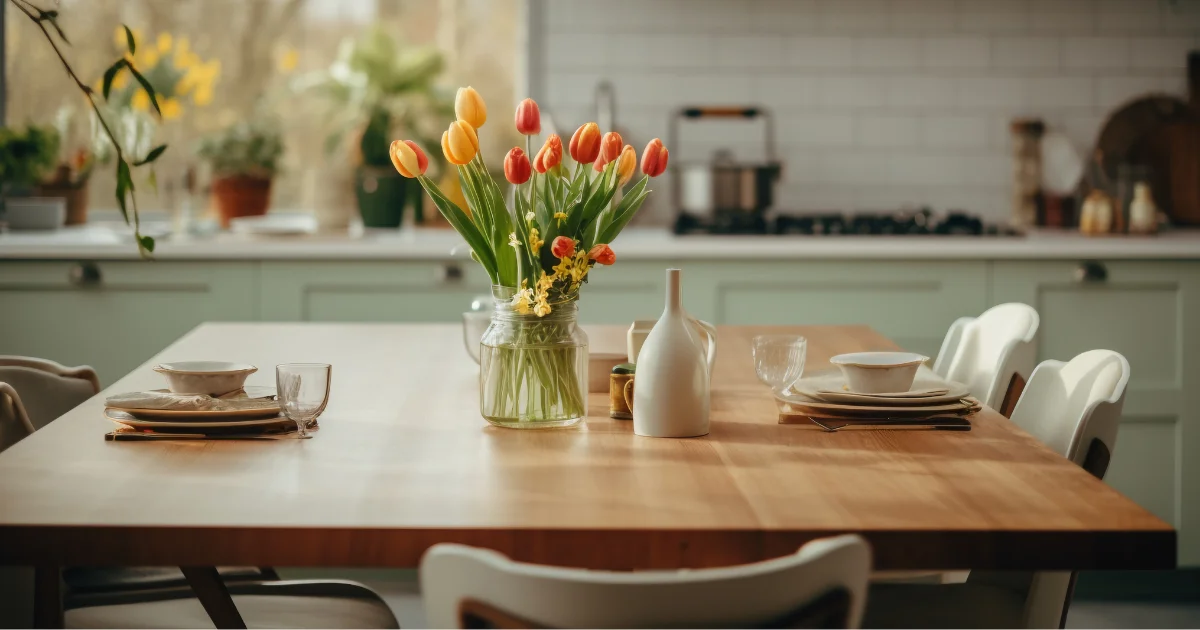Selecting the right table set for your home can transform your living space, making it both functional and stylish. Whether you’re choosing a dining table set, a coffee table set, or a set of side tables, finding the perfect match involves more than just picking what looks good. Here’s a comprehensive guide with tips and ideas to help you select the ideal table set for your home.
1. Define the Purpose
Dining Table Sets:
Consider how often you entertain guests and how many people typically dine at your home. A table set should accommodate your needs comfortably. Think about whether you need additional features, like extendable leaves for larger gatherings.
Coffee Tables:
Determine if you need a coffee table primarily for serving beverages, holding decorative items, or for extra storage. Some coffee tables come with built-in shelves or drawers.
Side Tables:
Decide if your side tables will be used for lamps, drinks, or as decorative accents. They can also serve as storage solutions in small spaces.
2. Measure Your Space
Dining Tables:
Measure the dimensions of your dining area, including the length, width, and height of the space. Leave enough room around the table for chairs and easy movement—aim for at least 36 inches of clearance on each side.
Coffee Tables:
Ensure the coffee table is proportional to your seating area. It should be roughly the same height as the cushions of your sofa and positioned about 18 inches from the seating area.
Side Tables:
Side tables should be at a height that’s level with or slightly lower than the arms of your sofa. Consider the space between furniture pieces to ensure easy access.
3. Choose the Right Style
Dining Tables:
Select a style that complements your dining room décor. Options include traditional, modern, farmhouse, or industrial. The style of the table should harmonize with other furniture and the overall theme of the room.
Coffee Tables:
Match the coffee table’s style with your living room’s theme. From sleek glass tables to rustic wooden ones, the table should enhance the room’s aesthetics while offering practicality.
Side Tables:
Side tables should coordinate with your main furniture but can also introduce new textures or colors to add interest. Consider materials like metal, wood, or glass, depending on your room’s design.
4. Consider the Material
Dining Tables:
Common materials include wood, glass, and metal. Wood offers warmth and durability, glass provides a sleek look and can make a room feel larger, while metal adds a modern or industrial touch.
Coffee Tables:
Materials should balance style with practicality. Wood offers classic charm, glass keeps things light and airy, and metal or marble adds sophistication and durability.
Side Tables:
Choose materials that match or complement your existing furniture. Wood, metal, and acrylic are popular choices, each offering different looks and functionality.
5. Think About Functionality
Dining Tables:
Consider if you need features like storage for utensils or extendable leaves. Adjustable heights and additional features can make your dining experience more flexible.
Coffee Tables:
Look for tables with storage options, such as shelves or drawers, if you need extra space for magazines, remotes, or coasters. Consider tables with adjustable heights or built-in trays for added versatility.
Side Tables:
If space is limited, choose side tables with storage or shelves. They can provide a handy spot for keeping essentials like books, lamps, or decorative items within reach.
6. Choose the Right Size
Dining Tables:
Ensure the table size fits your space and accommodates the number of people you typically host. A small table might work well for a small family, while a larger table is ideal for frequent entertainers.
Coffee Tables:
Choose a coffee table size that complements your sofa and seating area. A table that’s too large can overwhelm the space, while one that’s too small may look out of place.
Side Tables:
Side tables should be proportionate to the surrounding furniture. They should provide enough surface area for practical use but not dominate the space.
7. Match the Color and Finish
Dining Tables:
Consider the color and finish of the table in relation to your dining room’s palette. A contrasting color can create a focal point, while a matching finish can ensure harmony in the room.
Coffee Tables:
The coffee table’s color and finish should either complement or contrast with your sofa and other furnishings. Consider whether you want it to blend in or stand out as a statement piece.
Side Tables:
Side tables can either match the main furniture or introduce a new color or finish. They’re a great place to experiment with different textures or materials.
8. Budget Considerations
Dining Tables:
Set a budget that balances quality with cost. Higher-end materials and designs can be more expensive, but investing in a durable and stylish table can be worth it.
Coffee Tables:
Coffee tables come in various price ranges. Decide what features are important to you and find a table that meets those needs without exceeding your budget.
Side Tables:
Side tables can be relatively inexpensive, but prices vary based on materials and design. Look for options that fit within your budget while still offering the functionality and style you want.
9. Think About Maintenance
Dining Tables:
Choose materials that fit your lifestyle and maintenance preferences. Wood requires regular care, while glass and metal are easier to clean but may show fingerprints or dust.
Coffee Tables:
Consider how easy the material is to maintain. Glass tables might need frequent wiping, while wood or metal might require occasional polishing.
Side Tables:
Opt for materials that are easy to clean and maintain, especially if they’ll be used frequently or if you have young children.
10. Explore Versatile Options
Dining Tables:
Consider multifunctional tables, such as those with built-in storage or extendable features, to maximize your space and adapt to various needs.
Coffee Tables:
Look for coffee tables with additional features like lift-top mechanisms or hidden compartments for added functionality.
Side Tables:
Choose side tables with adjustable heights or modular designs to adapt to different needs and spaces.
Conclusion
Selecting the right table set for your home involves balancing functionality, style, and practicality. By considering the purpose, space, material, and style of the tables you choose, you can create a harmonious and functional living area. Whether you’re outfitting a cozy dining nook, a stylish living room, or a functional workspace, the perfect table set can enhance your home’s comfort and aesthetic appeal.



